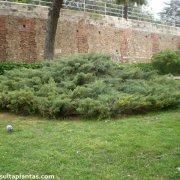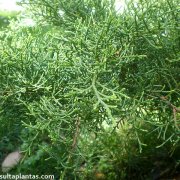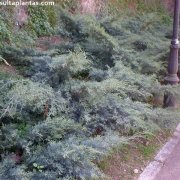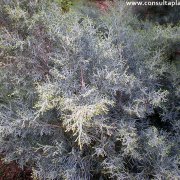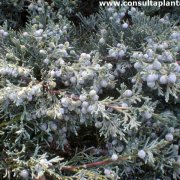Care of the shrub Juniperus horizontalis or Creeping juniper |
|
The Juniperus genus, Cupressaceae family, comprises 60 species of shrubs and trees native to the Northern Hemisphere. Some species are: Juniperus horizontalis, Juniperus conferta, Juniperus communis, Juniperus chinensis, Juniperus californica, Juniperus oxycedrus, Juniperus osteosperma, Juniperus phoenicea, Juniperus squamata, Juniperus drupacea, Juniperus thurifera, Juniperus x pfitzeriana (hybrid), Juniperus brevifolia. Common names: Creeping juniper, Creeping cedar. This species is native to northern North America. They are evergreen shrubs of creeping bearing with stems capable of rooting; They reach 3 meters (9.84 feet) in length and 50 cm (1.64 feet) in height. The leaves are scale-shaped (acicular when sprouting) and are green or bluish in color. The flowers are not decorative. The fruits are dark blue when ripe. Creeping juniper is a slow-growing conifer that is used in rockery, to cover slopes, as isolated specimens and to form groups. It is ideal for gardens by the sea. Juniperus horizontalis grows in full sun and semi-shade exposures. It resists heat and frost. Creeping juniper can grow in limestone, poor or stony soils. Transplantation or planting is done in autumn. Water moderately, waiting for the substrate to dry well. Creeping cedar resists drought well but not flooding. Fertilize in fall with compost or manure. Creeping juniper does not need pruning. If there is excess moisture Juniperus horizontalis can be attacked by fungi. Creeping cedar propagates by cuttings, by layering or by division in autumn. |
Images of the shrub Juniperus horizontalis or Creeping juniper |
Find plants
Juniperus horizontalis or Creeping juniper | Care and Growing
© 2026 FavThemes
